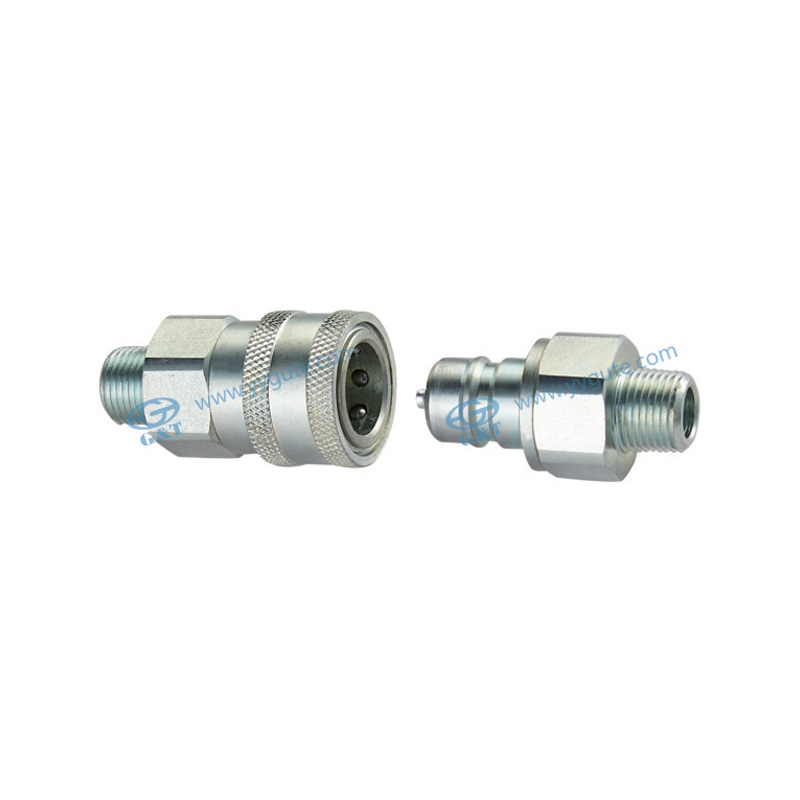How to ensure correct alignment and engagement when connecting quick disconnect connectors?
Ensuring correct alignment and engagement when connecting quick disconnect connectors is crucial to prevent leaks, damage, or inefficiencies in fluid transfer systems. Here are some steps to achieve proper alignment and engagement:
Visual Inspection: Before initiating the connection process, perform a comprehensive visual examination of both the male and female components of the quick disconnect couplings. Scrutinize every surface for any signs of wear, such as scratches, dents, or corrosion, which could compromise the integrity of the connection. Utilize adequate lighting and magnification tools if necessary to ensure a thorough inspection. Meticulously inspect the interior surfaces of the connectors to detect any debris, contaminants, or residue that may have accumulated, as these can impede the smooth engagement of the couplings. Employ appropriate cleaning methods and solvents to remove any obstructions and restore the connectors to their optimal condition.
Proper Orientation: Pay close attention to any orientation indicators, alignment markings, or directional arrows provided on the connectors to ensure precise alignment. In cases where multiple configurations are possible, refer to the installation manual or technical documentation to determine the correct orientation. Incorrect alignment can lead to misengagement, resulting in leaks, damage, or operational inefficiencies.
Alignment Guides: Many quick disconnect couplings are engineered with built-in alignment guides or features designed to facilitate the accurate alignment of the male and female components during the connection process. Take advantage of these alignment aids by carefully aligning the guides or mating surfaces before applying pressure to join the connectors. Exercise caution to avoid any lateral or angular misalignment, as this can impede the smooth engagement of the couplings and potentially cause damage to the sealing surfaces. Ensure that the alignment guides are securely engaged to maintain proper alignment throughout the connection process.
Smooth Connection: Apply a controlled and uniform force when joining the male and female components of the quick disconnect couplings to achieve a seamless connection. Utilize ergonomic hand positioning and gripping techniques to optimize leverage and control during the connection process. Avoid excessive or abrupt force, as this can result in overtightening, deformation, or damage to the connectors. If resistance is encountered during the connection, pause to assess the situation and identify any potential obstacles or misalignments. Proceed with caution and adjust the alignment as necessary to facilitate a smooth and uninterrupted engagement of the couplings.
Audible Click or Lock: Upon successful engagement of the quick disconnect couplings, be attentive to any audible cues or tactile feedback indicating a secure connection. Some couplings are equipped with audible click mechanisms or locking features that audibly signal the completion of the connection. Listen for these distinctive sounds and verify that the connectors are securely locked in place. Exercise caution when interpreting auditory feedback, as certain environmental factors or variations in coupling design may affect the clarity or intensity of the sound. In the absence of audible cues, visually inspect the connectors to confirm proper alignment and engagement.
Visual Confirmation: Following the connection of the quick disconnect couplings, conduct a meticulous visual inspection to validate the integrity of the connection. Thoroughly examine the mating surfaces of both the male and female components to ensure complete engagement and alignment. Inspect the perimeter of the coupling interface for any irregularities, such as gaps, offsets, or asymmetries, which may indicate incomplete or compromised engagement. Utilize magnification tools or inspection mirrors to access hard-to-reach areas and verify the condition of the sealing surfaces.
GT-A2 open and close type hydraulic quick coupling













Contact Us